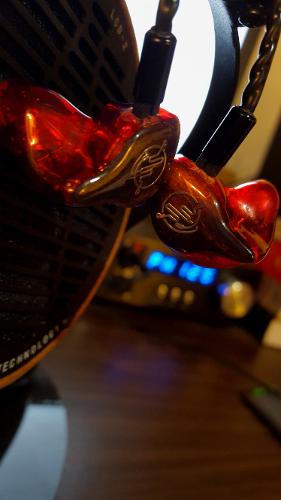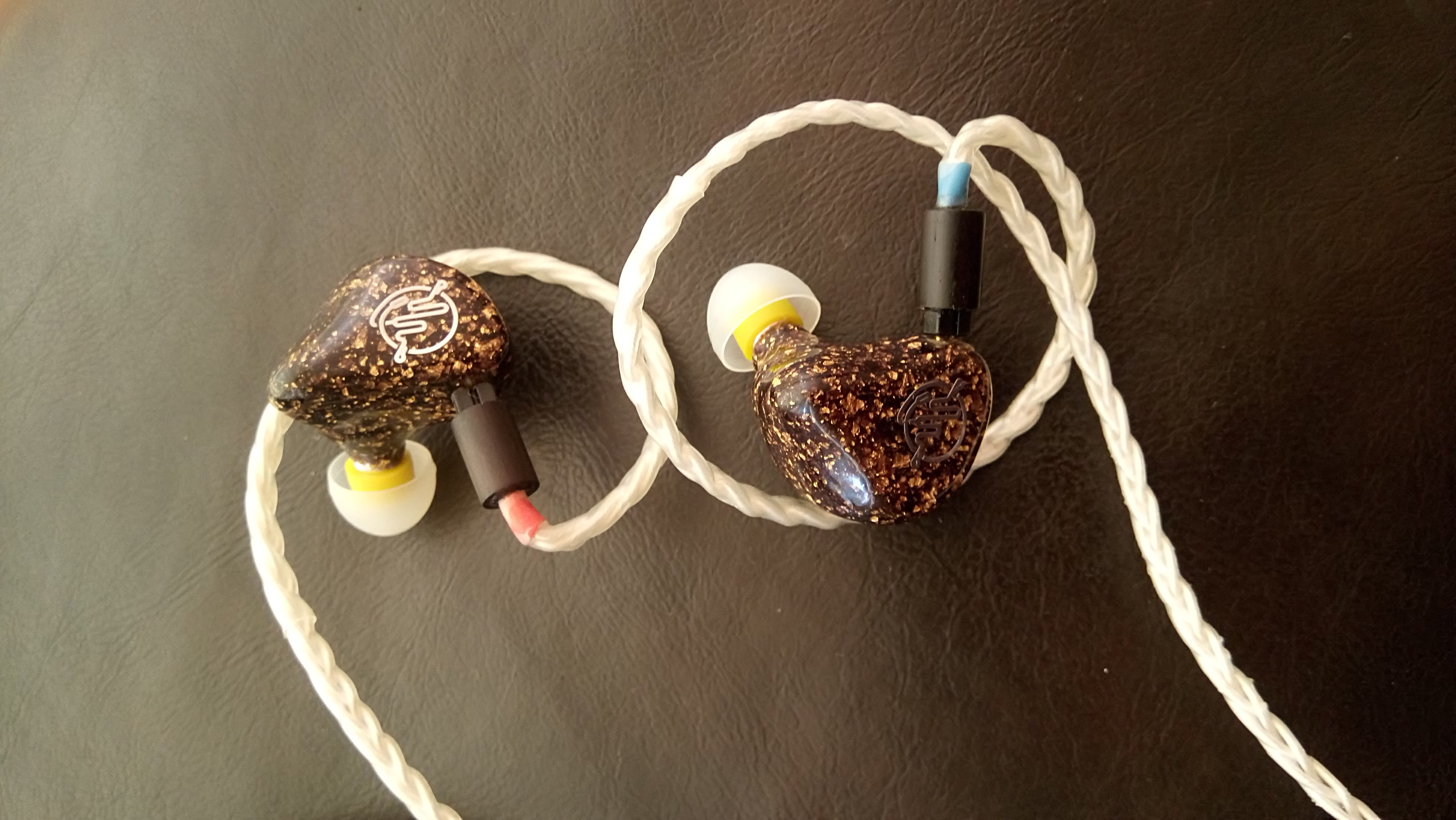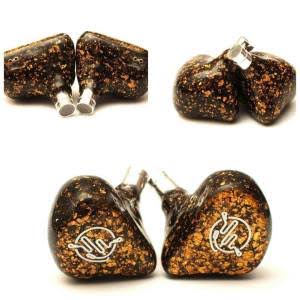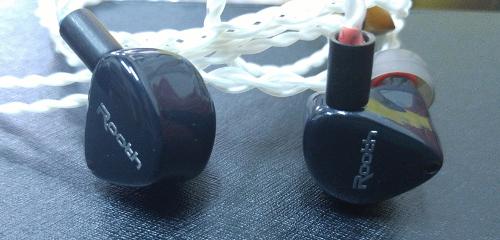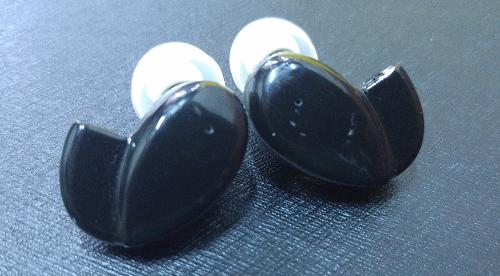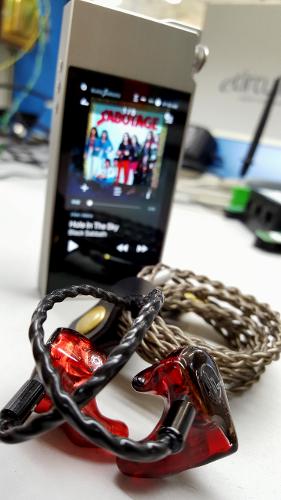
What would you do if you owned a pair of IEMs you loved completely—if only they weren’t so god-awful big?
That’s my predicament with the Jerry Harvey Audio Siren Series Angie. I’ve now owned her just under a year, and sound-wise she leaves nothing to be desired. Everything I wrote in my review still holds. And then some! Unfortunately, her size causes me sorrow and distress in regular intervals, tarnishing an otherwise miraculous relationship.
Modern wisdom says the solution to this conflict is to go custom with Angie, and I very nearly did. Yet I couldn’t shake the notion this was an opportunity to explore something new, something I may like even better.
My passions run towards a warmer, weightier sound. Angie is capable of superb note thickness, but I wanted to push this philosophy even further. The Noble Kaiser 10 almost got my money, its legendary status as a beefy, warmth-monster speaking directly to my aforementioned disposition.
However, the Solar BA10 repeatedly beat out Noble by Head-Fi members who owned or tried both. So in a reckless leap of faith I contacted Rhapsodio.

Big Boss Sammy at Rhapsodio is highly responsive on Facebook—not so much via email—and he took good care of me. Being a life-long artist, I simply had to design the CIEM myself. I sent him some proof of concept images for the look of my custom Solars and he and his team were enthusiastic about tackling the project.

Now, I’m not going to lie to you, Sammy is not the greatest with English. Communication is hit or miss at times. Now and again I must take pains to make certain we understand one another. Although, seeing as I don’t know any second languages, he’s doing far better than me. Plus, he’s very patient with me and willing to work things out until all the details are agreed upon by both parties.
This is my first experience with Custom In-Ear Monitors. I found an Ultimate Ears-approved Audiologist very close to me. She made the process painless, admiring how clean my ears were and commenting on my average canal size… which I felt undercut the praise a little. There’s nothing average about this man’s biology; I’m an experimental mutation the likes of which shall never be seen again.
Wait-time on my CIEM Solar ended up being two months… the first go around. For someone who’s previously only gone the universal route, waiting months for a new earphone is hard on the psyche. So you can only imagine the mental anguish of finding out the left ear piece does not seal well. I held on to them for a week, trying to maintain my denial. Eventually reason won out.
Back to the Audiologist for another ear-mold. And another one-and-a-half-month-wait for the refit.
And the left side is still not perfect!
Placing blame for fit issues with CIEMs is not clear-cut. It could be the Audiologist, the earphone manufacturer, or even your own damn fault. Maybe you tensed your jaw while the impressions set.
The fact the left monitor still does not fit perfectly is fishy. I shall bring my IEMs into the Audiologist and try to figure out what’s going on here. I CAN achieve a good seal. It just doesn’t last like a custom fit ought to. You needn’t worry that my review is compromised by sub-par audio. I’ve put a couple hundred hours on these with absolute perfect seal. I know what these truly sound like.
Who’s at fault over fit issues may be a gray area, but it’s far easier to blame Rhapsodio for the adventure I’ve had with the cable.
During our very first correspondences I stated my want for a 2.5mm TRRS Balanced cable. I went so far as to put that info, along with other specifics, in the PayPal notes upon purchase. I wrote a lovely letter that traveled with my ear impressions across the ocean which also made reference to the type of termination my cable should have. I made further comments about it during the many Facebook chats I enjoyed with Sammy.
The first time my Solars arrived they came with a 3.5mm TRS cable. I laughed. Sammy Laughed. When they came back after the refit, it still only had a 3.5mm TRS cable. I groaned, and Sammy cried. He decided to build me a special cable with a special new connector he found. Sammy claimed it changed the sound in a way he was very excited about.


It’s a fine bit of work to be sure. The only thing different is the termination, and yet he’s right, it does sound truly different. Even when I use my 2.5mmTRRS-to-3.5mmTRS adapter, to rule out my AKs balanced output as the culprit, there is indeed a change. It sounds a tad clearer than the other cable, but the bass is audibly lower, which I’m not a fan of.
The volume in general is also lower, which should not be, since my AK120ii puts out more voltage through its 2.5mm output. There must be a ridiculous amount of resistance in this jack. Unfortunately, the lack of bass is not an illusion due to the lower overall volume. When I volume match, and listen critically, the lows are lessened by a serious margin.
I think I’ll re-terminate this new cable myself when I find the motivation. For now I’ll stay with the single-ended 3.5mm cable.
The standard Pandora cable is a beautiful piece of craftsmanship and right sturdy, but I don’t like how stiff it is, or the rough texture coating each strand.
Sammy also turned my regular old standard Solars into FarInfrared Solars, which involves placing magic stickers on the driver clusters inside the shell. It’s meant to make the sound cleaner, with better extension. But no one can explain how or why. Since so much time past during the refit, I’m in no position to give a reliable comparison between the two versions. I loved them before, and I love them now. The stickers are pretty though.

Which makes this a good time to talk about how these buggers actually sound, yes?
The Rhapsodio Solar BA10 delivers a full, bassy presentation, with enough treble to maintain good air and detail. The vocals stand back a pace on the stage, letting the lows and highs swell around them to wonderful effect. Very much like a live rock concert. Solar uses ten Balanced Armature drivers: A pair of large drivers for bass. Four medium-size boxes dedicated to the middle spectrum. And four tiny tweeters administer the highs.
I cannot call the Solar v-shaped. The Klipsch R6 is v-shaped. In contrast, Solar is artfully done, as you never lose the vocals, no matter how much bass exists on the record. Like I said before, the mids simply take a small step back, nowhere near enough for the other frequencies to bury them.
Nonetheless, the Solar’s bass is its defining quality. It blooms and rumbles deep into the lower reaches. It’s fast and smooth and remarkably natural in tone. It sounds more like a dynamic driver than a BA. Such warmth swaths the music, creating a tangible, earthy presence.

You would expect earphones like this to be dark in balance, but nothing could be farther from the truth. Solar’s treble pierces the gloom in clear, bright highs that sparkle like a pearl in sunlight. The treble is clean and honest, widening the soundstage and revealing all the subtle complexities of the track. Upon first hearing Solar, I marveled at how much air there was, given the amount of bass and the thickness of the sound. Those highs truly elevate it above the murky fenlands that often come from too much sub frequency in the mix.
Terms like “recessed” are misleading when talking about the Solar’s vocal range; you can hear them perfectly. There is detail, grit, and vibrato. They sound true and right. With Rock & Roll, they could not be placed better in the mix. Still, if you are a purist at heart, and hold neutrality at top priority, then Solar is probably not for you, as they are tuned for fun and pleasure-listening, not professional/critical-listening.

Solar and AK120ii secure in my Pelican 1060 case, with 1062 foam insert.

I’m cobsmacked at how much the Solar sounds like my early favorite, the Audio Technica IM03. Yes, Solar is much thicker, and noticeably more detailed, yet bass punch and treble sparkle are nearly the same, with Solar just barely edging ahead. Overall balance and tonality are very alike. The IM03 is just a little closer to neutral with the vocals. The Audio Technica is one of the most natural-sounding earphones, and Solar does not necessarily beat it here, but rather matches that high grade.
Jerry Harvey’s Angie has been my closest companion for so long now. She sings with a voice I fell in love with upon first hearing it. Even after weeks and weeks with nothing but Solar in my ears, when I come back to Angie, I don’t know which I like more. Each does a couple of things better than the other.
My preference is to keep Angie’s bass attenuators at 2:30, giving her a warm, bassy profile, without losing detail or air.
Although Solar has two drivers more than Angie, note thickness and weight are about the same, both much fuller than the IM03. Angie is capable of nearly the same volume of bass, but Solar reaches deeper into the sub bass and the lows come off fuller and richer because of it. Amazingly, Solar also possesses FAR greater air in the presentation. Even when I turned Angie’s pots all the way down, Solar sounded brighter, with a better sense of space and atmosphere. This is likely due to Solar’s outstanding treble. I’ve always praised Angie for having clean, well-extended highs, but Solar adds some real sparkle to its top frequencies, and that makes a world of difference here. It brightens the stage up, revealing details Angie might miss.

So you may think by the above paragraph that I clearly favor Solar, but as I’ve said, it’s not quite so easy for me. Angie is smoother and lusher. Probably owing to its lack of sparkle. Every detail is not highlighted, rendering a more forgiving melody. Angie is not dull or muddy. FAR FROM IT. Though compared to Solar, she’s certainly the easier, more euphoric monitor. She pours honey in my ears and I love her for it.
I planned to sell off Angie when the Rhapsodio Custom came in, but I’m not sure I can do that. Her size really is a detriment, but if I don’t have to use her as my every day carry, maybe I can keep her around for the occasional sexy fun time when I lust for that old honey again.
In the meantime, The Rhapsodio Solar FarInfrared BA10 CIEM suits my needs splendidly. It is a killer earphone and I can’t recommend it enough. The same goes for Rhapsodio as a company; Sammy helms a magnificent ship over there in Hong Kong. While it may be young, Rhapsodio has grown mighty, and I look forward to seeing where next it sails.
-~::
Pinky_Powers::~-

